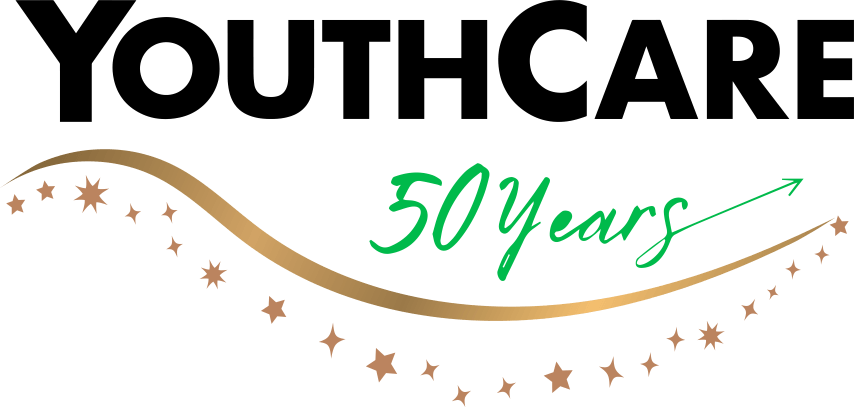
Guest written by Brad Blackburn,
Community Engagement & In-Kind Manager
This February, we celebrate Black history, Black culture, and all the contributions that the Black community has made toward advancing society to be more equal and just for all.
While it is crucial for us to acknowledge the sacrifices and hard-fought battles by brave individuals who stood against oppression, it is equally important to acknowledge how much work is still needed for the advancement of the Black community. In the issue space of youth homelessness, we see firsthand the impacts of generational trauma, particularly on those from marginalized backgrounds. In the land of the free and home of the brave, it is important to highlight that standing up for what is right requires true bravery, even when the odds aren’t in our favor.

The longstanding impacts of systemic racism still influence our institutions, workplaces, and culture. To move toward a civilization that liberates Black individuals from centuries of oppression, we must analyze the atrocities of the past and how they have morphed into modern society. True freedom did not come to African Americans following the Civil War; rather, it transformed into a new system of socioeconomic discrimination. Following the Emancipation Proclamation, many southern states adopted laws known as Black Codes, continuing the oppression of African Americans to benefit from cheap labor. This allowed white landowners to control the workforce as they did when slavery was in place.
Vagrancy laws were enforced to punish free African Americans who were not employed and to control the type of labor that was deemed acceptable. In South Carolina, for example, Black Codes permitted the county sheriff to assign Black vagrants to a white employer as a form of punishment. Generally, vagrancy laws allowed for freed African Americans to be arrested and sentenced to hard labor, essentially reinforcing the system of slavery as punishment for a crime. The intent behind such laws was to pressure African Americans to sign labor contracts out of fear – trapping them in labor that benefitted white landowners.
The criminalization of poverty and homelessness continues in contemporary times through the school-to-prison pipeline and prison industrial complex. Today, incarcerated individuals are denied access to workplace protections, earning pennies an hour for their labor that institutions and corporations use to maximize profits. However, this should not come as a shock given that the 13th Amendment outlawed slavery and involuntary servitude “except as a punishment for a crime whereof the party shall have been duly convicted.” Therefore, it is important for us to ask necessary, yet hard questions. Why is it that if African Americans and Hispanics were incarcerated at the same rates as white individuals, prison and jail populations would decline by almost forty percent? Why is it that statistically, 1 in 3 Black men can expect to go to prison at some point in their lifetime? Why is 25% of the worlds prison population in the United States, despite the country only containing 5% of the world’s population? Disparate outcomes for homelessness, poverty, and incarceration for Black individuals can be traced back for centuries and continue to be upheld through structures rooted in white supremacy and economic gain for the nation’s wealthiest individuals.
“Whether it be through advocacy, revising workplace policies to encourage equity, or building stronger relationships with Black-led community partners, there is a role every one of us can play to stand in solidarity with the Black community.“
Brad Blackburn
This February, we challenge individuals from all walks of life to reflect on the role you can play in dismantling institutional racism. Whether it be through advocacy, revising workplace policies to encourage equity, or building stronger relationships with Black-led community partners, there is a role every one of us can play to stand in solidarity with the Black community. Diversity, equity, inclusion, and access, expand beyond checking the boxes as another organizational task and requires more than creating space for Black voices. It requires acting on the needs and requests of those whose voices have been overshadowed for centuries.
Uplifting the Black community also requires acknowledging the outstanding achievements and contributions that Black individuals have made in our society. When we think of Black history, what usually comes to mind is the pain of the dark past. In our education system, there tends to be a focus on slavery and the civil rights movement, without providing much insight on the brilliant contributions Black individuals have made that we all continue to benefit from today. Amplifying stories of innovative African American figures like Garret Morgan, who invented the three-light traffic signal, and Lewis Latimer, who invented the carbon lightbulb filament, paving the way for Thomas Edison, is crucial to show young Black girls and boys that they are more than their past rooted in pain and trauma. The Black community has always been filled with beauty, love, and innovation.
For Black History Month and beyond, we encourage everyone to check out the Urban League of Metropolitan Seattle’s Black Business Directory.
Brad Blackburn,
Community Engagement & In-Kind Manager

